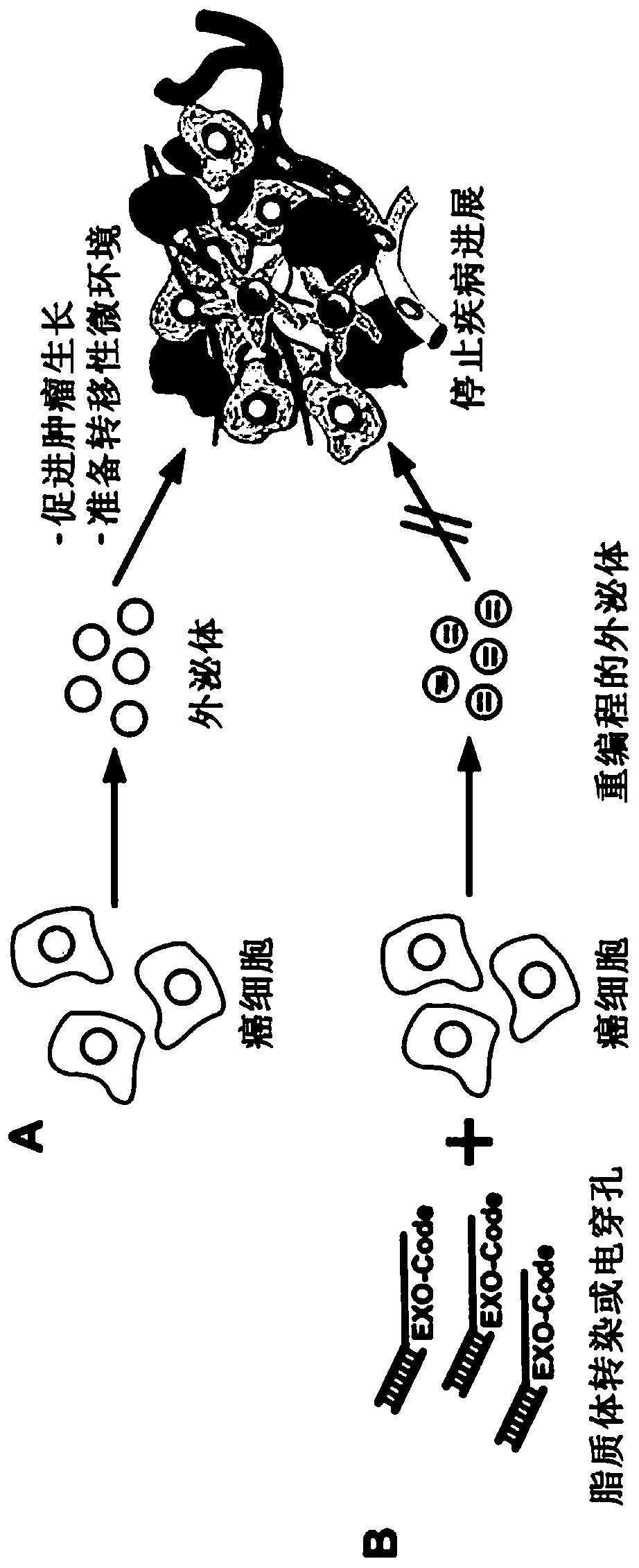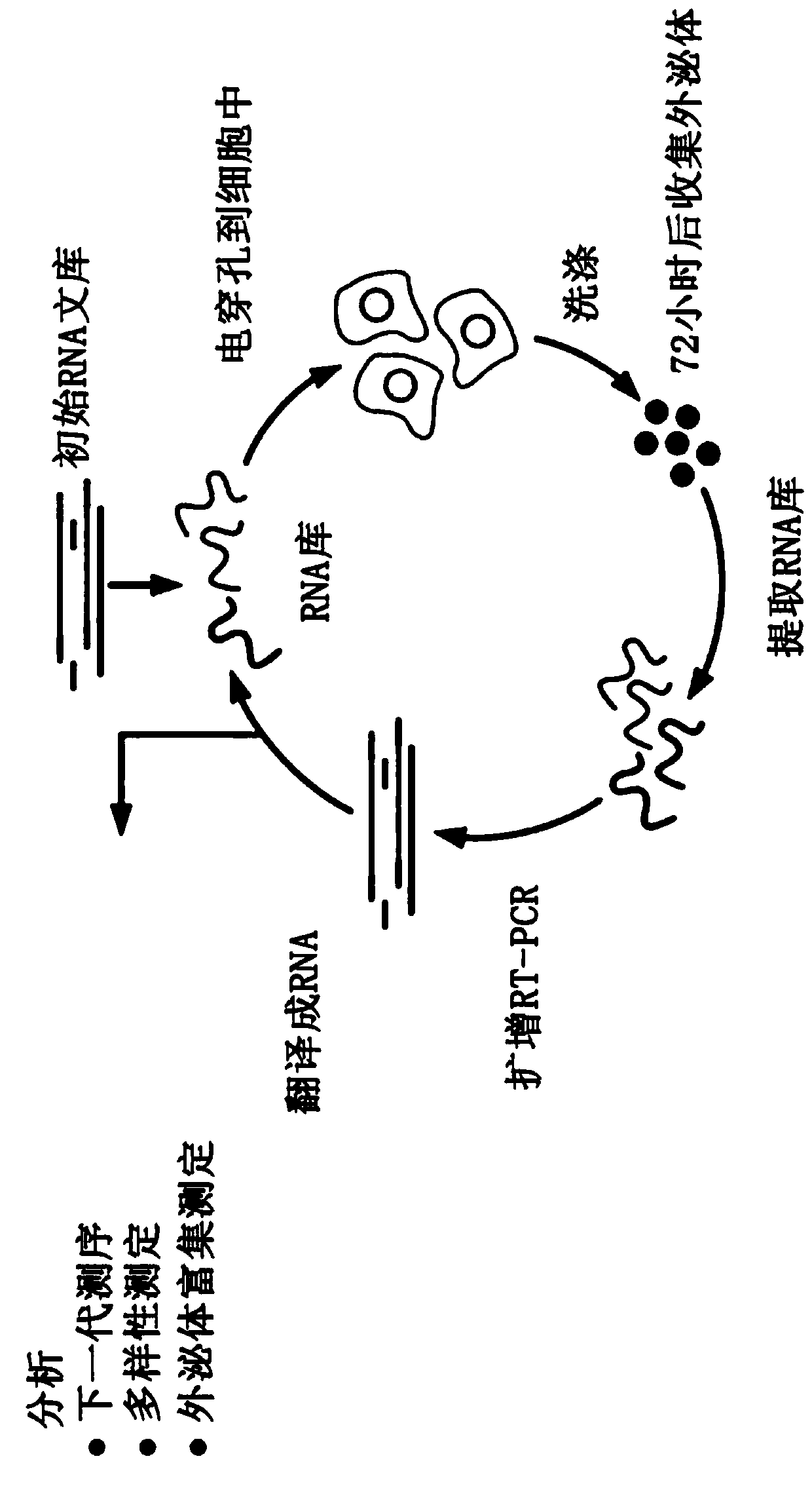Compositions and methods for loading extracellular vesicles with chemical and biological agents/molecules
A technology of drug molecules and cells, applied in biochemical equipment and methods, using vectors to introduce foreign genetic material, genetic material components, etc.
- Summary
- Abstract
- Description
- Claims
- Application Information
AI Technical Summary
Problems solved by technology
Method used
Image
Examples
Embodiment 1
[0065] figure 1 Non-limiting instructions are provided for reprogramming exosomes released from cancer cells using polynucleotides containing EXO-Code to arrest disease progression. (A) Tumor-secreted exosomes have been shown to prepare the metastatic microenvironment in distant organs. (B) Schematic depicting the conjugation of EXO-Code to therapeutic delivery to reprogram tumor-derived exosomes to arrest disease progression.
[0066] figure 2 A schematic illustrating the use of exosome biogenesis to identify biomimetic EXO-Code specifically enriched in exosomes is provided. During exosome biogenesis, ncRNA / mRNA can be loaded into exosomes during inward budding of the MVB membrane. Loading of nucleic acids can occur by: (A) passive mechanisms, (B) / (C) / (D) via active sorting mechanisms by sequence-specific sequences. (E&F) Exosomes are released into the extracellular environment by fusing with the cell membrane. (D) We adapted the process to identify the EXO-Code describ...
Embodiment 2
[0145] To assess the importance of specific nucleotides for the sorting potential of the identified EXO-Code motifs, mutant constructs containing single mutations were synthesized. In each case, C was mutated to G and vice versa, and A was mutated to U and vice versa, with the exception of consensus mutant 4, in which C was mutated to A, since this position in the motif is more commonly C, G or U instead of A. Motifs and motif hybrids spaced by 4 A nucleotides 5' upstream of the SNAIL siRNA sequence were synthesized. For the hybrid sequence (5'-AAGUGGCGUG-3') (SEQ ID NO:208), the motif is contiguous to the antisense SNAIL sequence and conjugated to the APC fluorescently labeled sense strand. For both the M8 (5'-AUCUUGUGGUC-3') (SEQ ID NO:207) and S6 (5'-AUGCGGGGGC-3') (SEQ ID NO:209) motifs, the orientation was swapped so that the active antisense The strands are conjugated fluorescent reporters. MDA or MSCs were electroporated with each construct in triplicate and washed 5...
PUM
| Property | Measurement | Unit |
|---|---|---|
| diameter | aaaaa | aaaaa |
Abstract
Description
Claims
Application Information
 Login to View More
Login to View More - R&D
- Intellectual Property
- Life Sciences
- Materials
- Tech Scout
- Unparalleled Data Quality
- Higher Quality Content
- 60% Fewer Hallucinations
Browse by: Latest US Patents, China's latest patents, Technical Efficacy Thesaurus, Application Domain, Technology Topic, Popular Technical Reports.
© 2025 PatSnap. All rights reserved.Legal|Privacy policy|Modern Slavery Act Transparency Statement|Sitemap|About US| Contact US: help@patsnap.com



